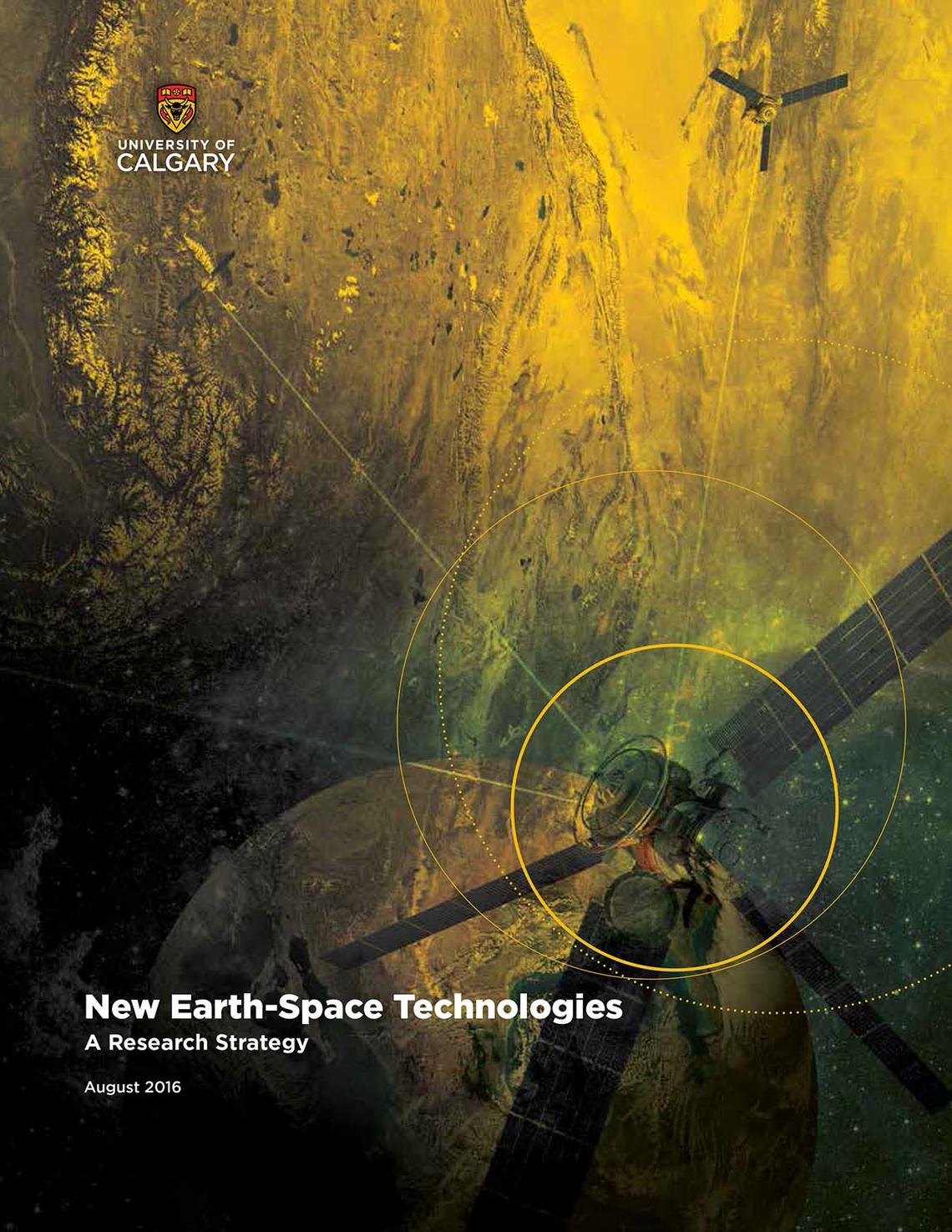Oct. 14, 2016
New UCalgary research strategy furthers exploration from here to space and back again

Susan Skone and Eric Donovan led development of the New Earth-Space Technologies Research Strategy.
Adrian Shellard, for the University of Calgary
From geospatial tools that monitor our ecosystems, to high-precision instruments orbiting the earth in satellites, University of Calgary researchers are advancing earth-space technologies that provide crucial information for safety and security as well as stewardship of our environment and natural resources.
The New Earth-Space Technologies (NEST) Research Strategy cuts across faculties and disciplines to integrate research strengths and build on the university’s long history of understanding phenomena in space, advancing communication and navigation systems, and earth observing.
“Having the formal NEST strategy in place provides an opportunity for our academics to collaborate across a number of disciplines to take on a number of grand challenges that can’t be solved from our individual silos,” says Eric Donovan, co-lead of the strategy and associate professor in the Department of Physics and Astronomy. “We already punch well above our weight in these areas and this strategy makes us even stronger.”
UCalgary research part of 20 space missions and counting
UCalgary’s national and international leaders in space science, geomatics, and communications and satellite systems have attracted more than $100 million of funding, led high profile global projects and been involved in more than 20 space missions.
In one example from a very long list, the European Space Agency’s three Swarm Satellites are equipped with technology developed by David Knudsen, professor in the Department of Physics and Astronomy. The electric field instruments (EFI) measure the density, velocity and temperature of the ionosphere which helps us understand Earth’s interior, near-Earth space environment and the sun’s influence on the planet.
NEST Research Strategy to contribute to 'paradigm shift'
UCalgary scholars are world leaders in sensors and sensor webs; global navigation satellite systems including the Global Positioning System; remote sensing; space sciences — planetary, astrophysics and near-Earth-space — and geospatial modelling. The university has leading infrastructure including the Rothney Astrophysical Observatory, Aurora Max, TREx and RISR-C.
“We are in a paradigm shift,” says Susan Skone, associate vice-president (research), associate professor in the Schulich School of Engineering and co-lead for the NEST research strategy. “We live on a connected world where ubiquitous platforms and sensor systems collect information about everything, everywhere, all the time — and this spatial information is driving smarter decisions. We are poised to help lead this technological transformation, one that has tremendous strategic applications and economic opportunity.”

Download the New Earth-Space Technologies Research Strategy.
The New Earth-Space Technologies Research Strategy identifies five grand challenges:
1. Environmental Monitoring
Sensor systems measuring light, gravity, and magnetics can be mounted on satellite, airborne, and ground-based platforms for environmental monitoring. These technologies will develop understanding of the effect of resource extraction activities on Canada’s ecosystems; improve monitoring in Canada’s North, in disasters, hazards and natural disturbances; as well as understand the effects of climate change.
2. Geospatial Connections — Enabling Better Knowledge for Better Decisions
The world is on the cusp of a generational transformation in geospatial sensing. Soon everything and everyone will be locatable everywhere. The telecommunications, energy, utilities, defence, automotive, navigation, marine and agriculture and other industries rely on geospatial products and services. There is an increasing need for data that is more accurate, has higher density and higher resolution, is produced more rapidly, and is acquired less expensively for the digital Earth and smart cities of the future.
3. Understanding the Influence of Arctic Change at Local, Regional, and Global Scales
The university can contribute technological solutions to inform environmental issues and support social and political initiatives to mitigate and manage change in the Arctic. Integrated Arctic science studies the system from the lithosphere to the upper atmosphere and beyond, exploring the interplay between Earth, ocean, atmosphere, space and even the biosphere. Researchers imagine the Arctic as a platform for other fundamental research, including particle physics and astrophysics.
4. Space Applications — Bringing the Benefits of Space to Society
With a notable record of space-related activities, UCalgary aspires to be Canada’s leader in using space for the benefit of society. Earth-orbiting satellites provide security, communications, navigation and remote sensing for weather, resource management, scientific research, and many other critical purposes. Space and satellite technology is particularly important for Canada because of the country’s vast and varied geography, including the changing Arctic; and its high geomagnetic latitude, which requires an understanding of space weather.
5. Understanding the Universe Near and Far
What are the nature and origin of the Earth and solar system? Where and how in the universe were the atomic elements and molecules created? How does structure arise in space plasmas? In highly focused areas, this research addresses fundamental questions in space physics, planetary science, and astrophysics.
New Earth-Space Technologies is the sixth research strategy developed by UCalgary thought leaders in co-ordination with the Office of the Vice-President (Research).
ABOUT THE UNIVERSITY'S RESEARCH VISION: The University of Calgary is uniquely positioned to find solutions for key global research challenges. The Strategic Research Plan harnesses the university’s exceptional capacity in these areas by focusing on six themes: Energy Innovations for Today and Tomorrow; New Earth-Space Technologies; Infections, Inflammation and Chronic Diseases; Human Dynamics in a Changing World; Engineering Solutions for Health; and Brain and Mental Health. Learn more about how the University of Calgary’s Eyes High vision aligns our research resources for the benefit of communities at home and around the world.
